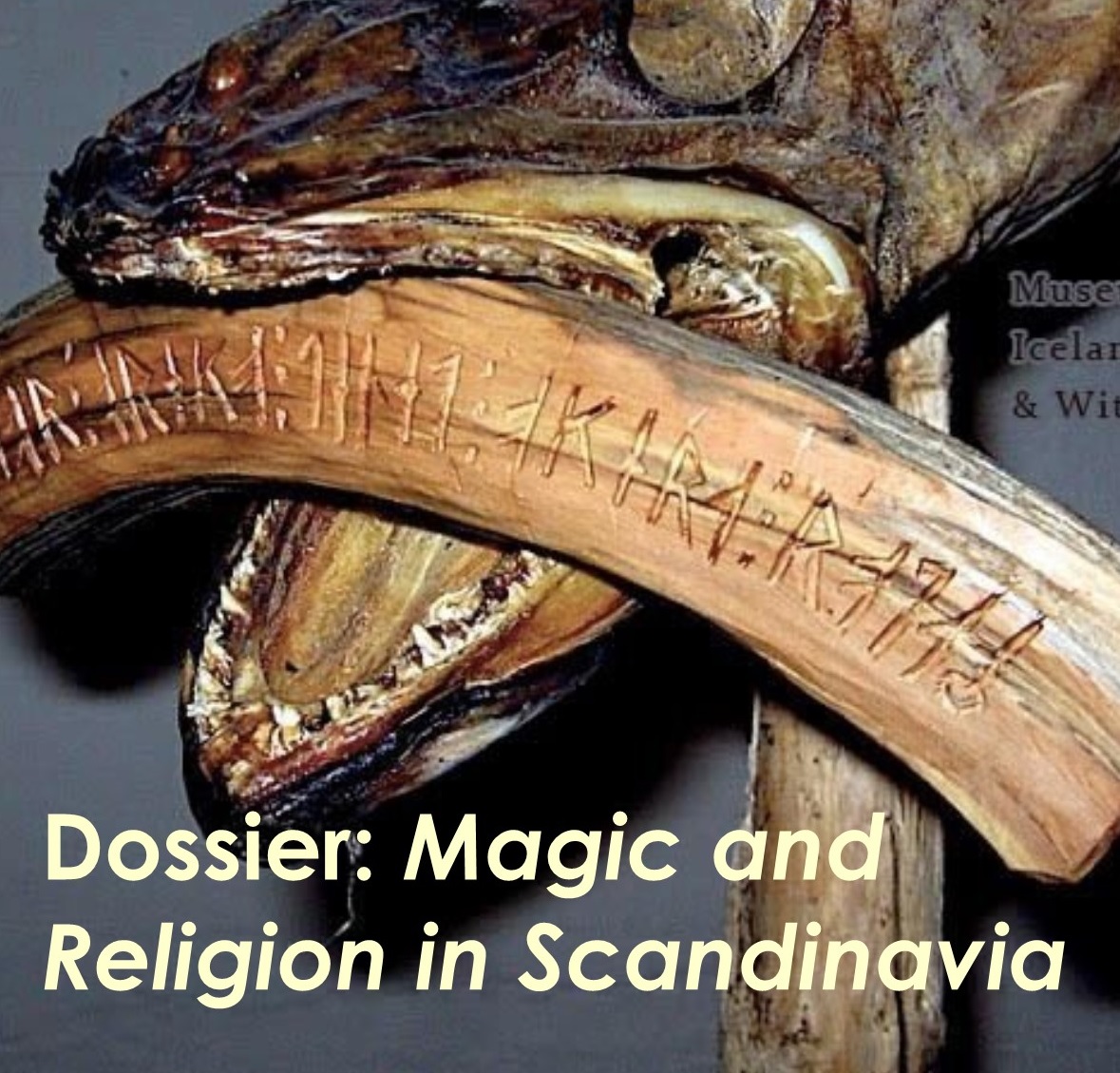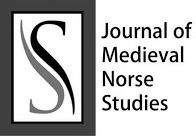Noble heathens: the synthesis of the christian and the pre-christian in Plácitusdrápa
Resumo
Plácitusdrápa is a twelfth-century skaldic poem based on the Legend of St Eustace. The drápa contains numerous kennings which allude to pre-Christian myth and legend. Scholars have largely dismissed these kennings as recycling material that had lost any cultural meaning as mere formal aspects of skaldic meter. An examination of the kennings and their distribution in the drápa, however, suggests that the skald was making conscious use of the material to embellish aspects of narrative and characterisation. Furthermore, the representation of heathen characters appears to have been influenced by the courtly drápa form. The relative positivity and negativity of the depiction of heathen characters appears to be tied to the nobility of their birth, with characters such as Emperors Trajan and Hadrian having more positive aspects. There is therefore evidence of a conscious two-way synthesis of Christian and pre-Christian material in Plácitusdrápa, rather than new Christian material being forced into a traditional secular form.
Downloads
Referências
Bibliographical references
Primary Sources
ANON., BHL 2760. In: STILTINGO, Jean; SUYSENKO, Constantine; PERIERO, Jean; CLEO, Jean; CARNANDET, Jean (Eds.). Acta Sanctorum, Septembris Tomus Sextus. Paris and Rome: Van der Plassche, 1867, pp.123–37.
FINNUR JÓNSSON (Ed.). “Plácitusdrápa efter håndskriftet no 673 B 4, i den Arna-Magn. Saml.”. Opuscula Philologica. Copenhagen, Klein, 1887, pp. 210-64.
GUREVICH, Ellen (Ed.) “Óðins nǫfn”. In: GADE, Kari Ellen and MAROLD, Edith (Eds.). Poetry from Poetic Treatises: Part 2. Turnhout, Brepols, 2017, pp. 731-53.
JAKOB BENEDIKTSSON (Ed.). “Íslendingabók”. In: JAKOB BENEDIKTSSON (Ed.). Íslendingabók. Landnámabók vol. 1. Reykjavik, Hið Íslenzka Fornritafélag, 1968, pp. 1–28.
LOUIS–JENSEN, Jonna and WILLS, Tarrin (Eds.). “Anonymous, Plácitusdrápa”. In: CLUNIES-ROSS, Margaret (Ed.). Poetry on Christian Subjects: Part I: The Twelfth and Thirteenth Centuries. Turnhout: Brepols, 2007, pp. 179–220.
LOUIS-JENSEN, Jonna. “Plácitus Drápa”. In: TUCKER, John (Ed.). Plácidus Saga. Copenhagen, C. A. Reitzels Forlag, 1998, pp. 89–124.
SVEINBJÖRN EGILSSON (Ed.). Brot af Plácitus-drápu, Viðeyjar Klaustur, Helgi Helgasson, 1833.
TUCKER, John (Ed.). Plácidus Saga. Copenhagen, C. A. Reitzels Forlag, 1998 [Norse has been normalised for this article].
Secondary Sources
ATTWOOD, Katrina. “Christian Poetry”. In: MCTURK, Rory (Ed.). A Companion to Old Norse-Icelandic Literature and Culture. Oxford, Blackwell, 2005, pp. 43–63.
CLEASBY, Richard and VIGFUSSON, Guðbrand. An Icelandic-English Dictionary. Oxford, Clarendon Press, 1874. Extracted from: https://norse.ulver.com/dct/cleasby/.
CLUNIES-ROSS, Margaret. A History of Old Norse Poetry and Poetics. Cambridge: D. S. Brewer, 2005.
EDWARDS, Diana. “Christian and Pagan References in Eleventh-Century Norse Poetry: The Case of Arnórr Jarlaskáld”. In: Saga-Book XXI, 1982-5, pp. 34–53.
FINNUR JÓNSSON. Lexicon Poeticum Antiquae Linguae Spetentionalis: Ordbog over det Norsk-Islandske Skjadesprog. Copenhagen, S. L. Møllers Bogtrykkeri, 1931.
FRANK, R. Old Norse Court Poetry: The Dróttkvætt Stanza. Cornell, NY, Cornell University Press, 1978.
GADE, Kari Ellen. The Structure of Old Norse Dróttkvætt Poetry. Ithica and London, Cornell University Press, 1995.
GOERES, Erin. The Poetics of Commemoration: Skaldic Verse and Social Memory, c. 890–1070. Oxford, Oxford University Press, 2015.
GREENFIELD, Stanley. “The Old English Elegies”. In: STANLEY, Eric Gerald (Ed.). Continuations and Beginnings. London, Nelson, 1966, pp. 142-75.
JÓN HELGASON. “Til skjaldedigtningen”. In: Acta Philologica Scandinavica 7, 1932-3, pp. 150-168.
LÖNNROTH, Lars. “The Noble Heathen: A Theme in the Sagas”. In: Scandinavian Studies 41.1, 1969, pp. 1–29.
MARENBON, John. Pagans and Philosophers: The Problem of Paganism from Augustine to Leibniz. Princeton, Princeton University Press, 2015.
MARENBON, John. “A Problem of Paganism”. In: STEEL, Carlos, MARENBON, John and VERBEKE, Werner (Eds.). Paganism in the Middle Ages: Threat and Fascination. Leuven, Leuven University Press, 2012, pp. 39–54.
MARENBON, John. “Boethius and the Problem of Paganism”. In: American Catholic Philosophical Quarterly 78.2, 2004, pp.329–48.
MAGERØY, Hallvard. “The Christ-Baldr Motif in Saga Literature”. In: LOUIS-JENSEN, Jonna;
MONTEVERDI, Angelo. “I testi della leggenda di S. Eustachio”. In: Studi Medievali 3, 1908–11, pp. 392–498.
SANDERS, Christopher; SPRINGBORG, Peter (Eds.). The Sixth International Saga Conference, 28.7.–2.8.1985: workshop papers, arranged by Det Arnamagnæanske Institut, Københavns Universitet Copenhagen: Det arnamagnæanske Institut, 1985, pp. 701–15.
POPE, John. “Second Thoughts on the interpretation of The Seafarer”. In: Anglo-Saxon England 3, 1974, pp. 75-86.
WHALEY, Diana. “Technical Terms”. In: Poetry from the Kings’ Sagas 1: Part 1, ed. WHALEY, Diana. Turnhout, Brepols, 2012, pp. cxxxix-clii.

Downloads
Publicado
Edição
Seção
Licença
O(s) autor(es) do original apresentado se compromete(m) a cumprir o que se segue:
- Todos os autores responsabilizam-se publicamente por ele.
- Os autores afirmam que este original é de sua autoria e que assumem integral responsabilidade diante de terceiros, quer de natureza moral ou patrimonial, em razão de seu conteúdo, declarando desde já que a obra não infringe quaisquer direitos de propriedade intelectual de terceiros.
- O(s) autor(es) concordam em ceder os direitos autorais do original à Revista Scandia, à qual concedem permissão para sua reprodução, edição e publicação on-line.
- O(s) autor(es) outorgam seus direitos autorais de seu original à Revista Scandia, licendiado sob a Criative Commons Attribution License, que permite o compartilhamento deste trabalho com o reconhecimento de sua autoria.
- O(s) autor(es) têm permissão e são estimulados a citar e distribuir seu original.


